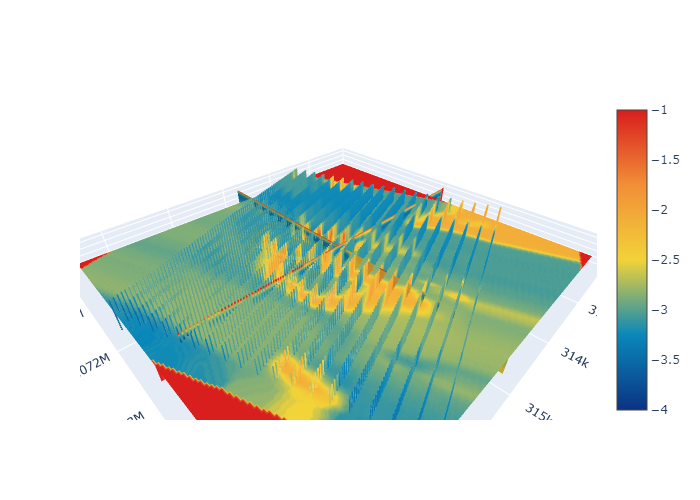Data Transfer¶
This application lets users transfer data between any two objects.

New user? Visit the Getting Started page.
Application¶
The following sections provide details on the different parameters controlling the application. Interactive widgets shown below are for demonstration purposes only.
[1]:
from geoapps.interpolation.application import DataInterpolation
app = DataInterpolation(geoh5=r"../../../assets/FlinFlon.geoh5")
app()
Project Selection¶
Select and connect to an existing geoh5 or ui.json project file containing data.
[2]:
app.project_panel
See the Project Panel page for more details.
Source Object/Data¶
List of objects available. Currently supports objects of type Points, Curve, Surface and Grid2D
[3]:
app.data_panel
Interpolation Parameters¶
List of additional parameters controlling the interpolation routine.
[5]:
app.parameter_choices
Method¶
Type of routine used to interpolate values.
[6]:
app.method
Nearest¶
Use the nearest neighbors between the Source and Destination objects (vertices or centroids). Uses Scipy.spatial.cKDTree
Linear¶
Use a Delaunay triangulation from Scipy.interpolate.LinearNDInterpolator.
Beware of memory and speed limitations related to 3D triangulation.
Inverse Distance¶
Weighted inverse distance averaging defined as:
\begin{equation} d_j = \frac{\sum_{i=1}^8 d_i \; r_i^{-1}}{\sum_{i=1}^8 r_i^{-1}} \end{equation}
where \(r_i\) is the radial distance between the \(j^{th}\) vertex/centroid to its \(i^{th}\) nearest neighbor. Eigth neighbours are used by default.
(Optional) Skew parameters¶
Exaggerate the inverse distance interpolation along a set direction. Useful when dealing with spatially elongated source objects such as 2D line models. See Example
[7]:
app.method_skew
azimuth: Angle in degree from North of source object orientation.
factor: Aspect ratio between the in-line spacing and the line separation (i.e. 25 m stations / 100 line spacing => 0.25)
Scaling¶
Data transformation performed before interpolating.
[8]:
app.space
Linear¶
Values interpolated in linear-space.
Log¶
Values converted to log-space before interpolation. The result is converted back to its original space (signed) after transfer. Useful for data values spanning multiple order of magnitude such as resistivity.
Horizontal Extent¶
Add horizontal limits to the inter/extrapolation of the data.
Maximum distance¶
Maximum 2D radial distance between the vertices/cells of the input and output objects. No-data-values are assigned beyond the specified distance.
[9]:
app.max_distance
(Optional) Object hull¶
Use the vertices/cells of a specified object to compute the horizontal extent. Usuful when transfering model values across meshes while limiting the extent of the output model to the survey area.
[10]:
app.xy_extent
Vertical Extent¶
Add vertical limits to the interpolation.
Maximum Depth¶
Maximum vertical distance (depth) between the vertices/cells of the input and output objects. No-data-values are assigned beyond the specified distance.
[11]:
app.max_depth
(Optional) Topography¶
Upper vertical limit of the interpolation defined by object vertices triangulated along the XY plane. A specific data field can be specified for the elevation of the vertices.
[12]:
app.topography.data_panel
No-data-value¶
Specify the fill value to assign vertices/cells beyond the horizontal and vertical extents.
[13]:
app.no_data_value
Output Panel¶
Trigger the computation routine and store the result.
[14]:
app.output_panel
See the Output Panel page for more details.
Example¶
[16]:
import numpy as np
from geoapps.utils.plotting import plotly_block_model, plotly_scatter
# Some plotting calls using plotly wrappers
points, data = app.get_selected_entities()
obj = app.workspace.get_entity(app.out_object.value)[0]
figure = plotly_scatter(points, color=np.log10(data[0].values), marker_scale=1, cmin=-4, cmax=-1)
figure = plotly_block_model(
obj,
value=np.log10(obj.children[0].values),
figure=figure, cmin=-4, cmax=-1
)

Need help? Contact us at support@mirageoscience.com